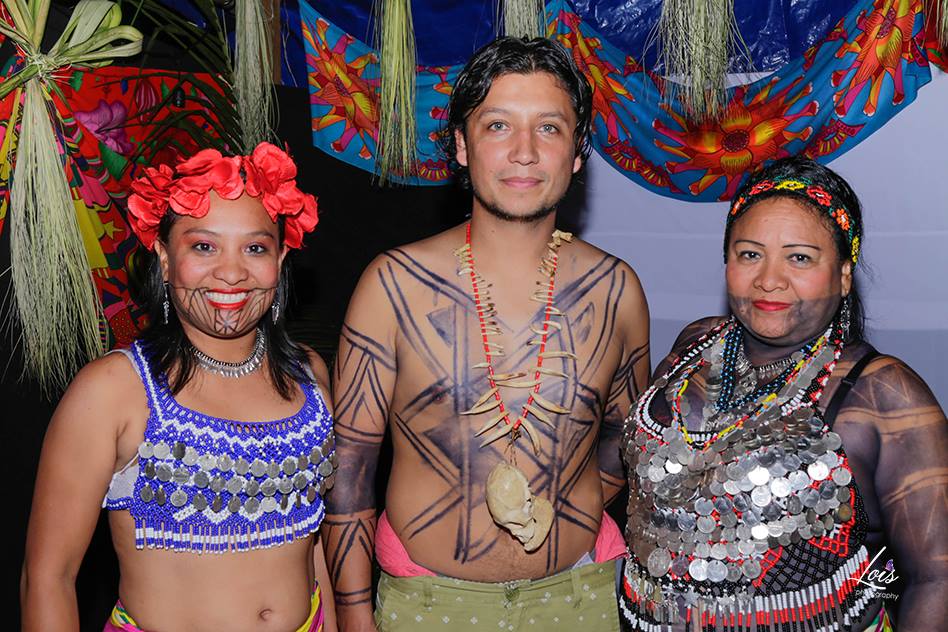Getting to know the Gunadule better
I want to tell you about one of the sacred elements of my people, the Gunadule, and through this share my prayer sung to God that unites with the song of my grandparents.
Sianar o Sianala:
There is a pot considered sacred which serves as a container to burn the aromatic fire of the cacao, used in various ceremonies. To construct one of these vessels, the grandmothers choose the clay (nabsaa), and they awaken the clay with the smoke of their pipe (inna obanned). They gather it up and knead it like a thick dough until it is very flexible. In times past, the grandmothers made many different pots for carrying coals. Their forms and names differed depending on the kind of clay used and the kind of paint with which they were decorated. When the grandmothers finished giving the pot its shape, they left it out to dry for several days, and finally they fired it so that it would stay a solid and strong pot (oged). They fired the pots in the middle of the night so that no profane eye (ise daglege) would come near. This explanation comes from the book “The Legacy of the Grandparents” by Atilio Martinez.
For the Gunadule nation cacao (siagwa) is part of life itself, part of our spirituality. It is present in the different stages of our life (birth, puberty ceremony, and death). In fact when I was born in the time of Bardud (We say Bardudni which means “The Month of the Medicinal Plant” which roughly corresponds to the month of December in the Gregorian calendar) my great-grandfather, who was a man that loved God and his people deeply and was recognized as one of the wisest and most outstanding leaders of the Gunadule nation, decided to plant a cacao tree so that I would always remember the importance of caring for the earth and remember where we come from, that we are connected to the earth. So every year when my birthday comes I remember this special tie that God had given me with the land and especially with a certain cacao tree.
The aroma of the cacao is used in blessing and purification ceremonies. The wise ones among the Gunadule say that the cacao’s shape is very similar to the human brain. And from there they continue telling the story of the strong relationship that we human beings have with the cosmos and with BabaNana (Great Father-Great Mother). In our ceremonies we place the cacao in the Sianar where the smoke rises up and the aroma fills the ceremony house and we sing to God. The sky and the earth hear our song as we invoke the name of God. Many millenarian peoples such as the Maya cultivated cacao over 2500 years ago. In fact, to find the meaning of the word cacao we have to search the Mayan language: cac means red (referring to the color of the shell of the fruit) and cau expresses the ideas of strength and fire. The the Gunadule it connects us with the Creator and the earth.

A Prayer:
The songs of my grandfathers and grandmothers tell us about the way to God. We are people who travel through Nabgwana (the heart of the earth) full of dreams, celebrations and laments. Our prayer, sung, rises to the Creator. We connect with BabaNana (Great Father-Great Mother), we need his/her light on this path. “The Creator made the beautiful trees to germinate, God made the huge mountains and made the rivers run with gold. God made the waves of the sea, and the great waters divided the land” (extract from a Gunadule narrative about the creation of the earth). We live because we know to sing and because we recognize the Great Creator in the narrative of our life. Today I unite myself to the song of my grandparents and I lift up my song so that God will permit us to continue finding his/her face on this path. May God’s light, the light of Jesus, shine on us. When the aroma of the cacao smoke rises up my prayer is that my Gunadule people will sing new songs, that they will write new stories of hope, justice and love for our people in Guna Yala and Abya Yala (America).




